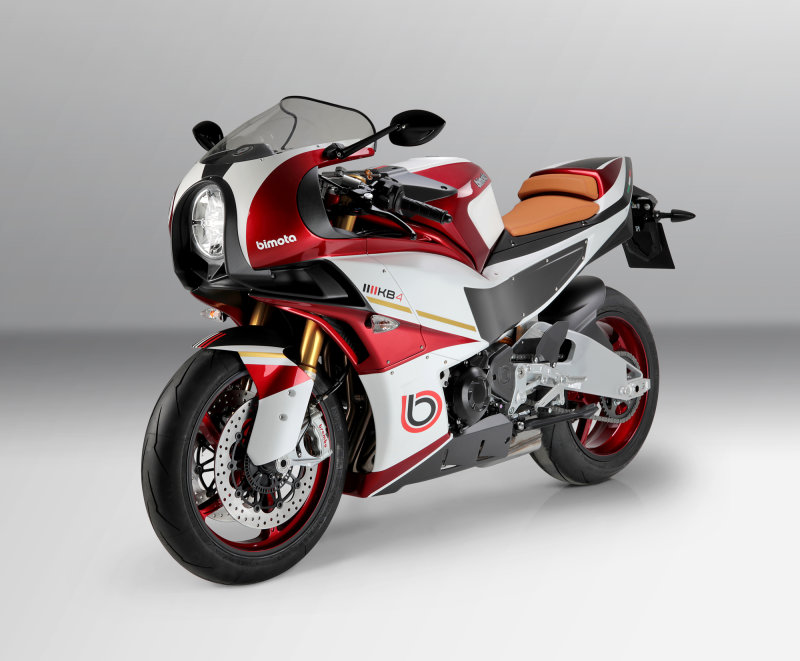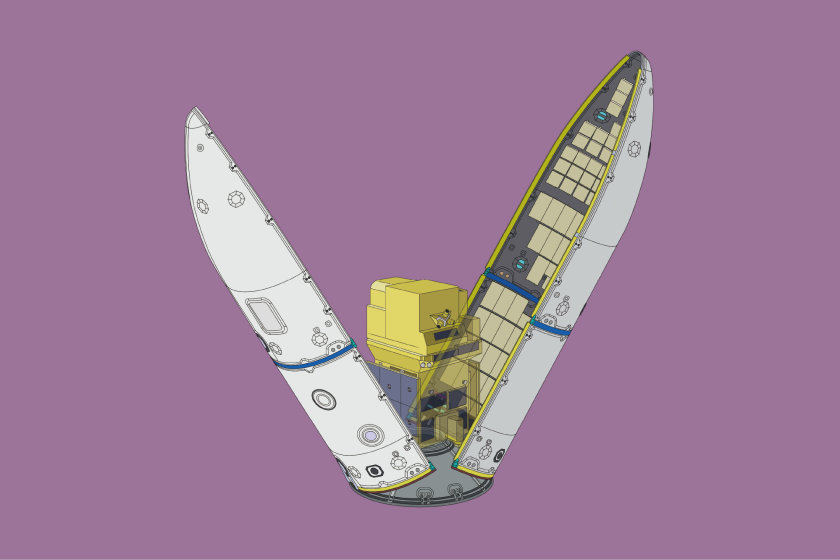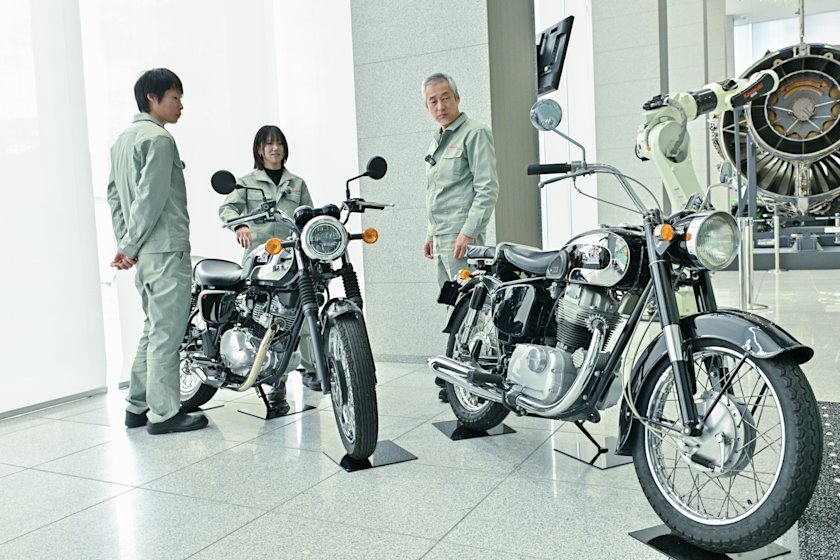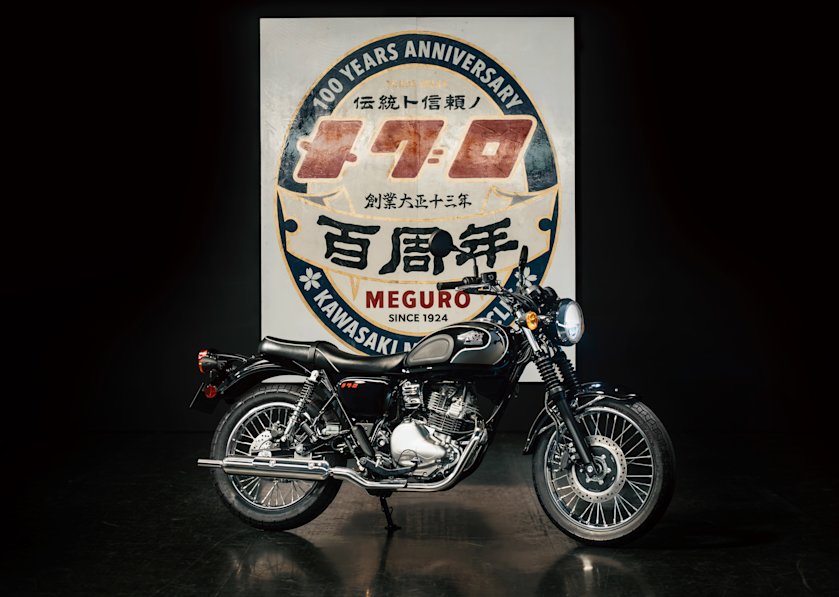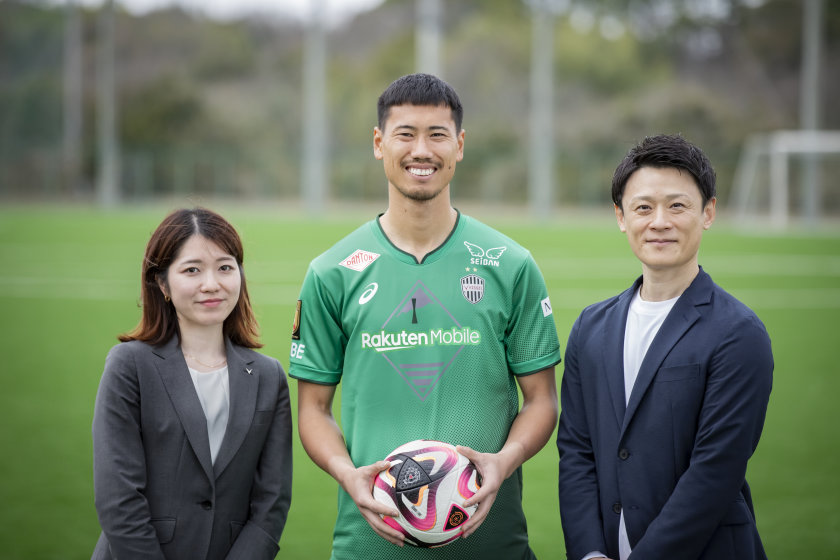History of Bimota ― From the emergence of a solitary motorcycle manufacture to the present

The motorcycles manufactured by the Italian premium brand persists with its own aesthetics—Bimota is known for incredibly luxurious products. The company made a fresh start by teaming with Kawasaki Motors in 2019. All motorcycle enthusiasts have at one time or another longed for their own models. How were such dreams born and how did they evolve? Let’s trace the story of Bimota, which begins in a beautiful town on the Adriatic Sea.
Birth of Bimota, Dawn of a Legend
Rimini is a port city on the Adriatic sea about 150 km east of Florence, Italy, where the emerald-green waters, blue sky, and historic buildings from ancient Rome are a part of the day-to-day lives of its citizens. This is the native place of Bimota. In 1966, a company manufacturing plumbing equipment was launched in Rimini by three young friends: Valerio Bianchi, Giuseppe Morri, and Massimo Tamburini, and the company was named Bimota by combining two letters from each of the founders’ family names.
Tamburini was a genuine motorcycle enthusiast who grew up in an area steeped in motor sports. Even after working in a repair shop in Piaggio and then establishing Bimota, he remained passionate about racing motorcycles on his beloved bike. However, he suffered a serious accident in 1972. The people around him worried about the future of the company and asked him to stop racing, which did not cool his passion for motorcycles. Tamburini finally decided to turn from his passion as a rider to become a constructor.
Creation of Original Aesthetic Frames Motivated by Enthusiasm
Making effective use of the lessons learned at Piaggio works, the knowledge accumulated in races, and the pipe processing skills cultivated from fabricating air-conditioning equipment, Tamburini started to make original frames in 1973. The beautiful frames reflected Italian craftsmanship with an emphasis on the artistic sense and were quite outstanding functionally with a lightweight structure that offered excellent stiffness and a low center of gravity. The HB1 racer with the Honda CB750 engine was the first machine that used a Bimota frame and placed in many Grand Prix events; the image of “Bimota = Frames” instantly spread throughout the racing circuit. In 1975, Bimota produced ten kits of of its first commercial model the HB1 with a Honda CB750 Four engine. Great fame grew not only in the field of motorcycle sports but also in the wider world.

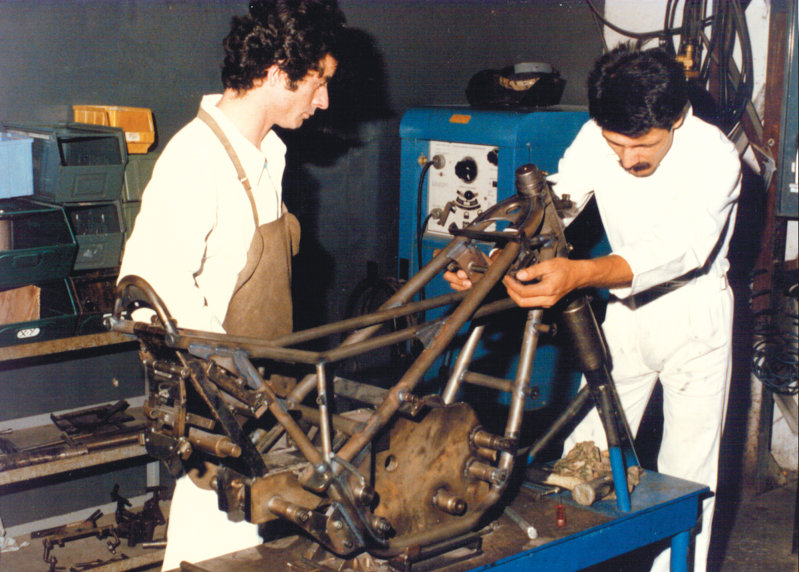
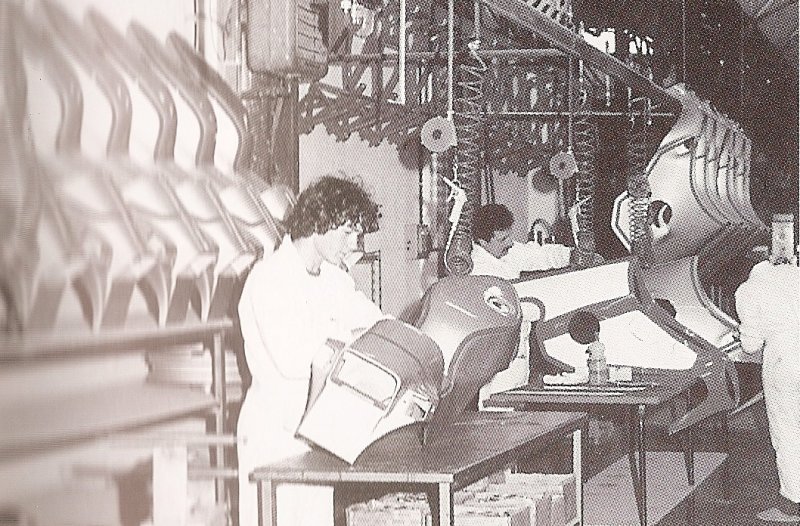
Emergence of Bimota with the Power of the Kawasaki Z1
Thereafter, Bimota continued to produce high-end models, generously giving their original frames an engine from any of four Japanese manufacturers (Kawasaki, Suzuki, Honda, and Yamaha). The second commercial vehicle released in 1977 after the HB1 was the SB2 with a Suzuki GS750 engine. The machine fully represented the creativity of Tamburini with its unique structure where the swing arm pivot and the drive sprocket were arranged coaxially with a modular design to split the frame. Despite costing more than twice the price of the Suzuki GS750, the SB2, impregnated with innovative ideas, resulted in the first success of Bimota with a total production of 140 kits and finished vehicles. This led to an increase in the number of factory workers from 10 to 30 in order to respond to production demand.*1
The KB1, which was presented at the Milan Motorcycle Show in November 1977, used a Kawasaki Z900 engine. The KB1 with a Z1000 engine, whose price was higher than the SB1, was subsequently available commercially, and the model became a big seller with the total production of 827 units (sum of kits and complete vehicles) in four years of manufacturing from 1978 to 1982.*2 Three Kawasaki x Bimota models appeared during the era of Tamburini: the KB1 and its complicated rigid multi-tubular truss frame with the power of the Z1, the KB2 in 1981, and the KB3 in 1983.
*1: Suzuki: GSX-R by Mike Seate, (Motorbooks International)
*2: Fast Bikes Magazine, November issue, 2011 (Mortons Media Group)
Federico Martini Joins and his Representative Work, the DB1
The history of Bimota has always been accompanied by the presence of brilliant engineers. After Tamburini left in March 1983 because of conflicts with Morri, who was in charge of business, the impetus of the company fell. The person who saved Bimota under worsening business conditions was Federico Martini, the new technical director from Ducati. While taking over Tamburini’s multi-tubular truss frames, Martini established a new frame design by employing his ingenuity. The DB1, which was presented in 1985, was combined with a compact 750F1 engine from Ducati that resulted in a novel design with a full fairing hiding the proud, elegant framework. Compatible with functionality, uniqueness, and excellent handling performance, its beauty was appreciated, and the DB1 series, whose production exceeded 700 units, became the representative model of Bimota. Moreover, the YB4, to which Bimota’s first aluminum twin-spar frame was applied, and other masterpieces expressed their unequaled styles. Martini was very successful and memorable in the short period of employment from 1983 to 1989.
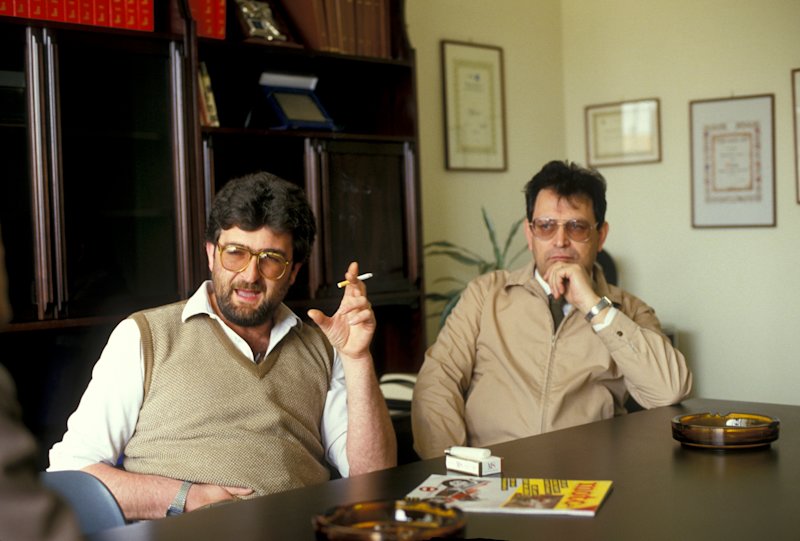
Announcement of the Legendary TESI 1D by the Celebrated Designer Pierluigi Marconi
The third chapter of Bimota was authored by Pierluigi Marconi who assumed the post of technical director in 1989. Marconi, who had always wanted to make motorcycles by himself someday, visited Bimota as a university student. His thesis (tesi in Italian) about hub-center steering completed by the student and his friend Roberto Ugolini was the path to work that eventually had an impact on the world, the TESI 1D. In 1982, Marconi formed the concept of foregoing a telescopic front fork and instead using the ends of a swing arm that extended frontward and backward from the body center to support the wheel axles, respectively. After seven years, several prototypes were created with Honda and Yamaha engines, and the creative vehicle revealed to the world as the TESI 1D in 1990 meant the arrival of a new era in the motorcycle industry.
Marconi then produced the SB6, the greatest hit for Bimota, while updating the conventional popular models of the DB and YB series. The range of models was widened by active development of distinctive machines that included the DB3 Mantra and the BMW engine single cylinder Supermono, which used a truss frame of oval-section aluminum tubes. Last, the dream machine completely designed by Bimota that included its engine, the 500 V Due, competed in the Italian Championship in 1993. The ambitious in-house two-stroke V-twin engine with direct fuel injection attracted huge interest. However, it was most difficult to prepare for mass production and a stable supply of this epoch-making system. This then brought down the curtain on the Bimota chronicle of 2000.
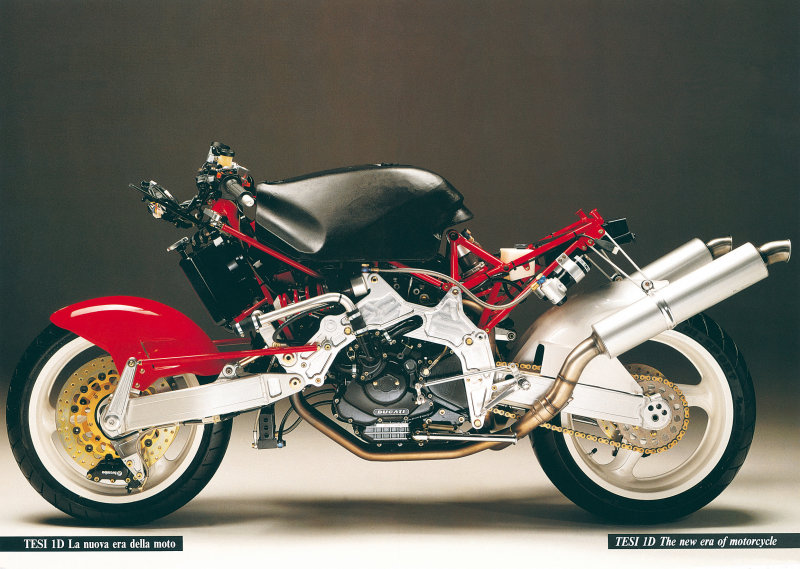
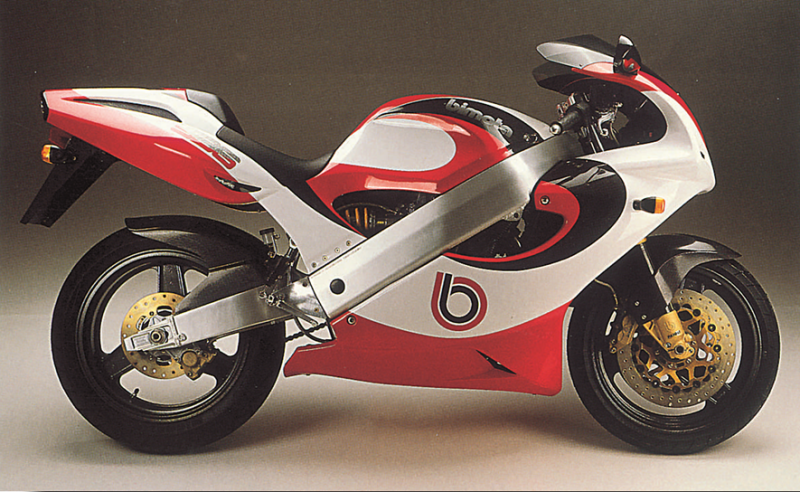
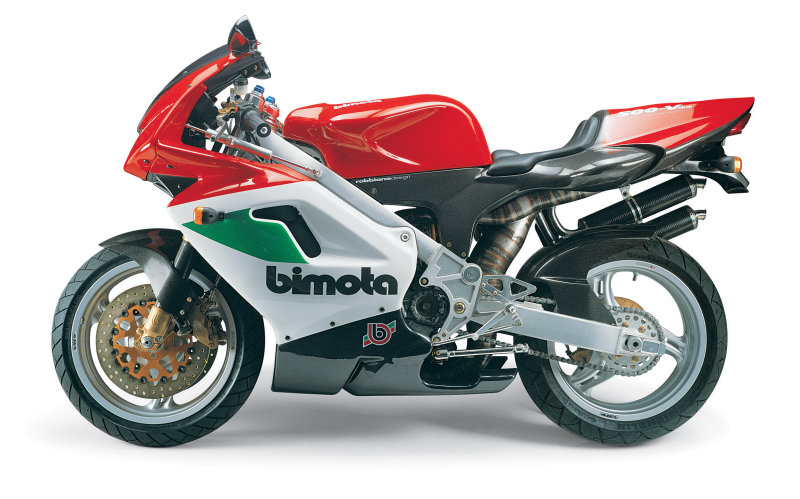
New Chapter of Bimota in the 21st Century after its Rise and Fall
Nevertheless, Bimota, known as a treasure in the motorcycle world, never fell into a “Big Sleep.” There were some indications of a revival in the 2000s, such as the designation of Sergio Robbiano as the chief designer and the release of the DB5. Expecting a comeback through several changes of ownership, Bimota finally took its first step toward a new chapter in 2019. The new Bimota, which started again with Kawasaki Motors, welcomed the renowned designer, Pierluigi Marconi. With the new major models of the TESI H2 and the KB4, they are hoping to establish another legend.

